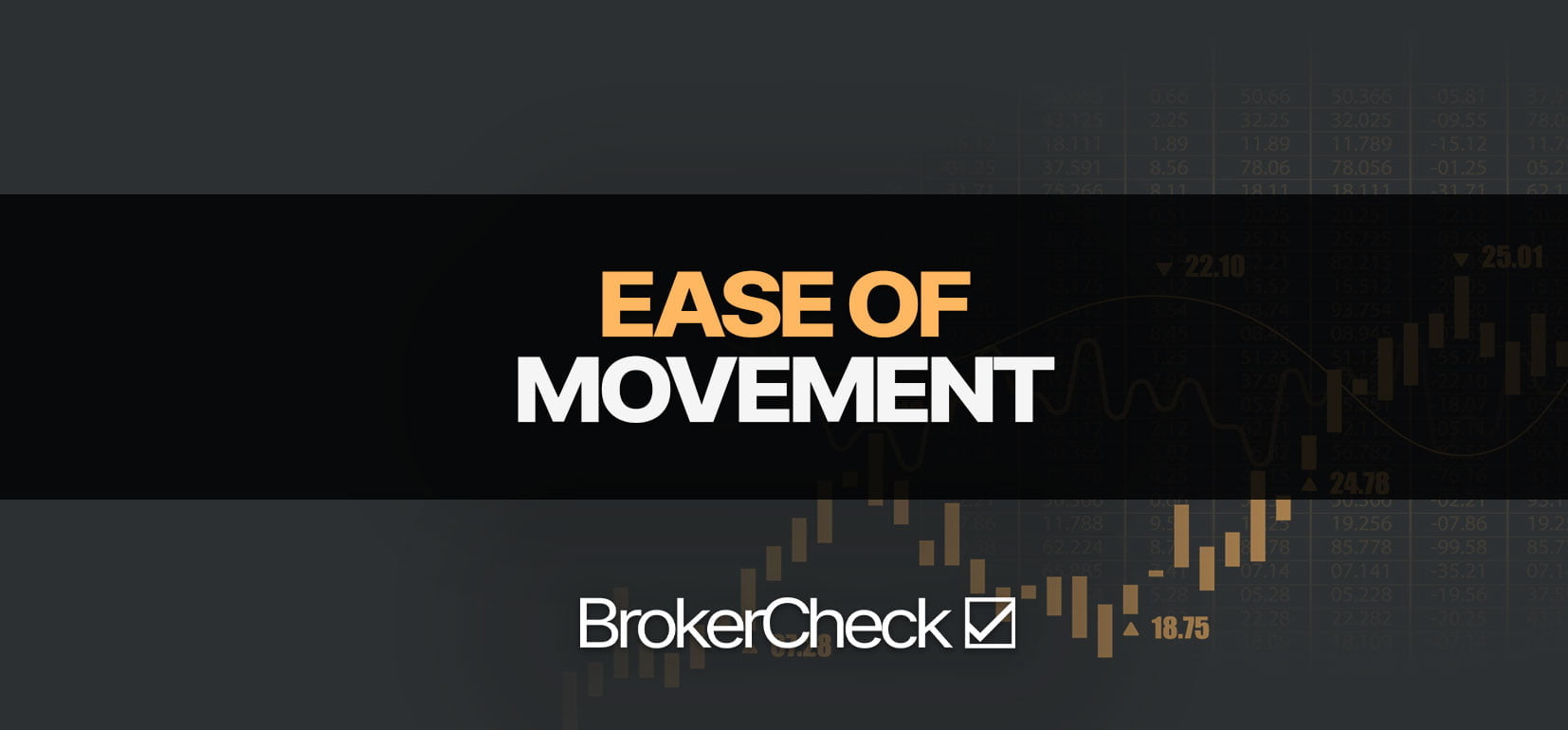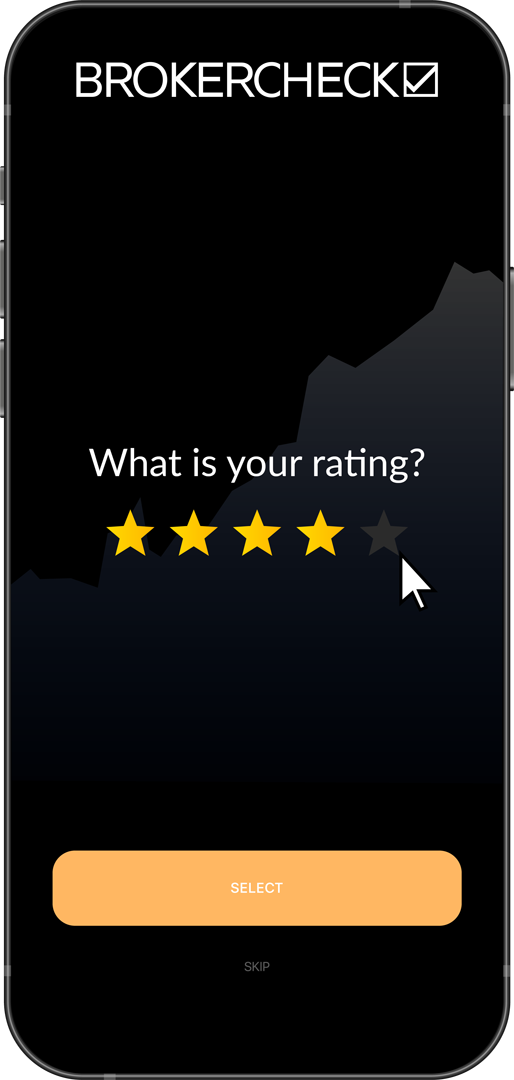1. Understanding the Ease of Movement (EoM) Indicator
In the thrilling world of forex and crypto trading, the Ease of Movement (EoM) indicator stands as a powerful tool for traders aiming to interpret market dynamics with precision. This unique indicator, developed by Richard W. Arms in 1970s, is designed to illustrate the ‘ease’ or ‘difficulty’ of an asset’s price movement.
The EoM indicator is a volume-based oscillator that fluctuates above and below the zero line. It essentially gauges the relationship between an asset’s price and its volume, and how they interact to cause price movement. When the EoM is high, it signals that the asset is moving upward with ease, and when it is low, it indicates that the asset is having difficulty rising.
In terms of settings, the EoM indicator typically uses a 14-period setting, but traders can adjust this according to their trading strategy and risk tolerance.
Now, let’s delve into strategy. The EoM indicator can be a valuable part of a trader’s arsenal, particularly when used in conjunction with other indicators. Traders often look for divergence between the EoM and price to identify potential reversals. For instance, if the EoM is rising while the price is falling, it could signal a potential upward price reversal. Conversely, if the EoM is falling while the price is rising, it could indicate a potential downward price reversal.
Moreover, traders can use the EoM to identify and confirm trends. If the EoM is consistently above zero during an uptrend, it confirms the trend. Similarly, if it’s consistently below zero during a downtrend, it validates the trend.
1.1. The Concept of Ease of Movement
In the world of forex, cryptocurrency, and CFD trading, understanding the concept of Ease of Movement is crucial. It’s a technical indicator that provides traders with insights into the relationship between price and volume. This invaluable tool not only aids in identifying potential price movements but also in evaluating the liquidity of different markets.
The Ease of Movement indicator, developed by Richard Arms, is designed to illustrate the ‘ease’ with which an asset’s price moves up or down. It’s a reflection of the asset’s volume and price change, providing a comprehensive overview of its market dynamics.
The indicator’s main premise is that the easier it is for an asset’s price to move, the more likely it is to do so. For instance, if the Ease of Movement value is high, it indicates that the asset’s price can move easily in either direction, given sufficient volume. On the other hand, a low value suggests that the asset’s price is likely to remain relatively stable, even with significant volume.
This formula may seem complex at first glance, but it’s actually quite straightforward. The ‘Distance Moved’ measures the midpoint of the current period’s price range relative to the previous period’s midpoint. The ‘Box Ratio’ represents the volume needed to move the price. Finally, the ‘Ease of Movement’ is the ratio of the ‘Distance Moved’ to the ‘Box Ratio’, indicating the ease with which the price moves for a given volume.
The beauty of the Ease of Movement indicator is its versatility. It can be used in various trading strategies, from identifying potential breakouts to predicting reversals. By understanding and effectively using this powerful tool, traders can make more informed decisions, potentially yielding higher returns in the forex, crypto, and CFD markets.
1.2. The Origin of EoM
The Ease of Movement (EoM) indicator, a brainchild of Richard W. Arms Jr., emerged from the trading floors in the 1970s. Arms, an accomplished author, and innovator in the trading space, sought to create an indicator that could effectively measure the ‘ease’ or ‘difficulty’ with which an asset price moved over a given period. His intention was to provide traders with a tool that could gauge not only price movement but also the volume of trading.
Arms believed that the correlation between price and volume was a critical factor in predicting market trends. He was convinced that significant price changes accompanied by high trading volumes indicated a stronger movement, whether bullish or bearish. Conversely, price changes with low volumes suggested weaker movements.
In essence, the EoM indicator was designed to offer a nuanced view of market trends, factoring in both price changes and trading volumes. This dual approach was revolutionary at the time and continues to be a valuable tool for traders across various markets, from forex and crypto to CFDs.
The EoM indicator’s formula is a testament to Arms’ ingenuity. It calculates the distance an asset’s price has moved per unit of volume, effectively quantifying the ease or difficulty of movement. This calculation allows traders to identify potential market trends and make informed decisions accordingly.
- Price and Volume: The EoM’s dual consideration of price and volume offers a more comprehensive view of market trends.
- Formula: The indicator’s formula quantifies the ease or difficulty of movement, providing valuable insights to traders.
- Market Trends: By identifying potential market trends, the EoM empowers traders to make informed decisions.
As we delve deeper into the settings and strategies associated with the EoM, it’s essential to appreciate the innovative thinking that led to its creation. Richard W. Arms Jr.’s pioneering work has left an indelible mark on trading, and his EoM indicator continues to be a reliable tool for traders worldwide.
2. The Formula and Settings of EoM
Delving into the mechanics of the Ease of Movement (EoM) indicator, it’s crucial to understand its formula and settings. The EoM is calculated by subtracting the prior day’s average price from the current day’s average price, then dividing the result by the volume-weighted average price (VWAP). This results in a value that represents the ‘ease’ of an asset’s movement.
The formula looks like this:
EoM = [(High + Low)/2 – (Previous High + Previous Low)/2] / [(Volume/10000) / (High – Low)]
To break it down:
- The term (High + Low)/2 represents the current day’s average price.
- The term (Previous High + Previous Low)/2 is the prior day’s average price.
- The term (Volume/10000) / (High – Low) is the volume-weighted average price.
This formula is the heart of the EoM indicator, providing traders with a numerical representation of an asset’s movement.
When it comes to settings, the EoM is typically set to a 14-period on most charting platforms, which means it calculates the ‘ease’ of movement over the past 14 periods. However, traders can adjust this setting based on their trading style and strategy. Short-term traders might prefer a smaller setting for more sensitivity, while long-term traders might opt for a larger setting to filter out market ‘noise’.
Remember: The EoM indicator, like all technical analysis tools, is not infallible. It should be used in conjunction with other indicators and analysis techniques to increase the odds of successful trading.
2.1. The EoM Formula
Delving into the heart of the Ease of Movement (EoM) indicator, we find the core principle that fuels its efficiency – the EoM formula. This mathematical algorithm, though intricate, is the key to unlocking the potential of this powerful trading tool.
The EoM formula is structured as follows: EoM = [(High + Low)/2 – (Previous High + Previous Low)/2] / [Volume / (High – Low)]. Now, let’s break this down.
The first part of the formula, (High + Low)/2 – (Previous High + Previous Low)/2, calculates the midpoint price change. Essentially, it’s the average price of the current period minus the average price of the previous period. This gives us an understanding of the price movement.
The second part, [Volume / (High – Low)], is the box ratio. This represents the volume traded per price change. By dividing the volume of the period by the range of the period, we get a clear picture of how much volume is required to move price.
Together, these two components provide a comprehensive view of the market’s ease of movement. When the EoM value is high, price changes are happening with little volume – a potential sign of strong trends. Conversely, low EoM values suggest that significant volume is required to change the price, indicating a lack of momentum.
- High: The highest price of the current period
- Low: The lowest price of the current period
- Previous High: The highest price of the previous period
- Previous Low: The lowest price of the previous period
- Volume: The number of shares or contracts traded in a security or market during a given period
Understanding the EoM formula can give traders an edge, helping them to spot opportunities and make informed decisions. By incorporating this into your trading strategy, you can navigate the volatile waters of forex, crypto, or CFD markets with greater confidence and precision.
2.2. Setting Up the EoM Indicator
Setting up the EoM (Ease of Movement) Indicator is a process that requires precision and understanding, but once mastered, can become a powerful tool in the hands of any forex, crypto, or CFD trader.
First, you’ll need to access your trading platform and locate the EoM Indicator. This is usually found in the ‘Indicators’ or ‘Oscillators’ section of most trading platforms.
- Select the EoM Indicator and add it to your chart.
- Upon adding, a settings window will typically appear. Here, you can adjust the period setting. The standard setting is usually 14 periods, but this can be modified based on your trading style and strategy.
- Next, you’ll notice two lines within the EoM Indicator, a zero line and the EoM line. The zero line is a reference point that indicates no ease of movement, while the EoM line reflects the ease or difficulty of price movement.
Understanding these lines is crucial. When the EoM line is above the zero line, it suggests that prices are moving upward with ease. Conversely, when the EoM line is below the zero line, it indicates that prices are moving downward with ease.
Customizing the EoM Indicator can also enhance its effectiveness. Some traders prefer to change the colors of the lines for better visual clarity or adjust the thickness of the lines to suit their preferences.
Remember, the key to using the EoM Indicator effectively lies in understanding its settings and how they align with your trading strategy. It’s not a magic bullet, but when used correctly, it can provide valuable insights into market movement and potential trading opportunities.
3. Interpreting EoM Signals
Diving into the heart of EoM signals, it’s essential to understand the nuances that can make or break your trading strategy. When the EoM value is positive, it indicates that the market is moving upward with ease, offering a potential opportunity for a lucrative long position. On the other hand, a negative EoM value suggests that the market is moving downward with ease, hinting at a possible short position opportunity.
However, the value of EoM alone doesn’t provide the complete picture. The real magic lies in the direction of the EoM line. A rising EoM line, irrespective of whether the value is positive or negative, signals a growing ease of movement, thus, indicating a strong trend. Conversely, a falling EoM line suggests that the market is losing momentum, and the trend may soon reverse.
- Positive EoM Value + Rising EoM Line: This is a bullish signal. The market is moving upward with increasing ease, suggesting a strong upward trend.
- Negative EoM Value + Falling EoM Line: This is a bearish signal. The market is moving downward with increasing ease, indicating a strong downward trend.
- Positive EoM Value + Falling EoM Line: This is a bearish signal. Though the market is moving upward, it’s losing momentum, hinting at a potential trend reversal.
- Negative EoM Value + Rising EoM Line: This is a bullish signal. Though the market is moving downward, it’s losing momentum, suggesting a possible trend reversal.
Remember, these signals are not foolproof and should be used in conjunction with other technical indicators for the best results. In the volatile world of forex, crypto, and CFD trading, a holistic approach always trumps a one-dimensional strategy. Also, keep in mind that the EoM indicator is more reliable in a trending market than in a sideways or ranging market.
3.1. Reading the EoM Indicator
Diving into the heart of the Ease of Movement (EoM) Indicator, it’s crucial to understand how to interpret its readings. The indicator’s value is plotted on a chart, and this visual representation can be a powerful tool for traders.
Positive and Negative Values
The EoM indicator fluctuates above and below a zero line, presenting both positive and negative values. A positive value suggests that the market is moving upward with ease, indicating a potential bullish trend. Conversely, a negative value signifies that the market is moving downward effortlessly, hinting at a possible bearish trend.
Increasing and Decreasing Values
The magnitude of the EoM value is also significant. An increasing positive value could mean the upward movement is gaining momentum, providing a stronger signal for a bullish trend. Similarly, an increasing negative value might imply the downward movement is accelerating, strengthening the signal for a bearish trend.
Zero Line Crossovers
Zero line crossovers are another essential aspect to consider. When the EoM line crosses above zero, it may be a good time to buy as this indicates the price is moving upward with ease. When the EoM line crosses below zero, it could be a signal to sell as it suggests the price is moving downward effortlessly.
- Volume Influence: It’s vital to remember that the EoM indicator considers volume in its calculation. A significant change in volume can dramatically impact the EoM value. A surge in volume can amplify the EoM value, making the market movement appear more comfortable than it might be. On the other hand, a drop in volume can diminish the EoM value, potentially understating the ease of market movement.
Deciphering the EoM indicator’s readings can provide insightful information about the market’s direction and momentum, helping traders make informed decisions. However, like any other technical tool, it shouldn’t be used in isolation. Combining it with other technical indicators and fundamental analysis can enhance its effectiveness and accuracy.
3.2. Divergences in EoM
A closer look at the Ease of Movement (EoM) indicator reveals the concept of divergences, a key aspect that traders often use to predict potential market reversals. Divergences occur when the price action of a currency pair, cryptocurrency, or CFD doesn’t align with the EoM indicator’s movements. It’s a kind of discrepancy that could signal an upcoming change in the market trend.
- Bullish Divergence: This occurs when the price hits a new low, but the EoM indicator fails to reach a new low. It suggests that the downward trend may soon reverse, presenting a potential buying opportunity.
- Bearish Divergence: Conversely, a bearish divergence happens when the price reaches a new high, but the EoM fails to hit a new high. This could indicate that the upward trend is losing momentum and a selling opportunity may be on the horizon.
However, it’s crucial to remember that divergences aren’t a standalone signal. They’re most effective when used in conjunction with other technical analysis tools. For instance, coupling divergences with support and resistance levels can significantly improve the accuracy of your predictions. Likewise, using volume indicators alongside EoM can provide a more holistic view of the market’s direction.
Spotting divergences can be a game-changer in your trading strategy. It not only provides a heads-up on potential trend reversals but also helps identify optimal entry and exit points. However, like any trading strategy, it requires practice and patience to master. It’s always wise to test your strategies on a demo account before risking real capital.
4. EoM Trading Strategies
- The Crossover Strategy: This is a classic strategy that involves observing the EoM line as it crosses the zero line. When the EoM line crosses above the zero line, it’s an indication to buy. Conversely, when it crosses below the zero line, it’s a signal to sell. This strategy is simple to grasp and can be particularly effective in trending markets. However, be cautious of false signals during periods of low volatility.
- The Divergence Strategy: Divergence occurs when the price of a forex pair, cryptocurrency or CFD and the EoM indicator are moving in opposite directions. This could be a strong signal that the current trend is losing momentum and a reversal may be imminent. For instance, if the price is making higher highs but the EoM is making lower highs, this is a bearish divergence and could be a signal to sell.
- The Confirmation Strategy: This strategy involves using the EoM indicator in conjunction with other technical indicators to confirm trading signals. For example, if the EoM line crosses above the zero line and a moving average crossover also occurs, this could be a strong buy signal. By using multiple indicators, you can increase the probability of successful trades and reduce the risk of false signals.
- The Overbought/Oversold Strategy: Although not typically used for identifying overbought or oversold conditions, the EoM indicator can be adapted for this purpose. If the EoM line reaches an extreme high, it could indicate that the asset is overbought and a price correction may be due. Similarly, if the EoM line reaches an extreme low, it could indicate that the asset is oversold and a price bounce may be likely. This strategy can be particularly useful in range-bound markets.
Each of these strategies has its strengths and weaknesses, and the best approach will depend on your individual trading style and risk tolerance. It’s also important to remember that, like all technical indicators, the EoM is not foolproof and should be used in conjunction with other forms of analysis.
4.1. Combining EoM with Other Indicators
The power of the Ease of Movement (EoM) indicator magnifies when combined with other trading indicators, creating a potent strategy that can help traders navigate the tumultuous waters of forex, crypto, and CFD markets.
Volume Weighted Average Price (VWAP) is a brilliant companion to EoM. VWAP provides a benchmark of the average price a security has traded at throughout the day, based on both volume and price. When the EoM shows a positive value, indicating upward price movement with light volume, and the price is above the VWAP, it could signal a strong bullish trend.
Relative Strength Index (RSI) is another tool that pairs well with EoM. RSI measures the speed and change of price movements and is typically used to identify overbought or oversold conditions. If the EoM indicates a positive value, pointing to an upward price movement with low volume, and the RSI is below 30 (oversold territory), it may be an opportune time to buy.
Stochastic Oscillator can also be used in conjunction with EoM. This momentum indicator compares a particular closing price of a security to a range of its prices over a certain period. The combination of a positive EoM value (suggesting an upward price movement with light volume) and a Stochastic Oscillator value below 20 (signifying an oversold condition) could indicate a potential upward price movement.
Moving Averages (MA) are another effective pairing. If the EoM shows upward price movement with light volume, and the price is above the MA line, it could be a strong bullish signal.
Incorporating these additional indicators into your trading strategy can enhance the effectiveness of EoM, providing a more comprehensive view of market conditions. However, as with all strategies, it’s crucial to use them in conjunction with proper risk management techniques. Remember, no strategy guarantees success, but a well-rounded, informed approach can significantly increase your chances.
4.2. EoM in Different Market Conditions
Navigating the volatile world of trading, whether it be forex, crypto, or CFDs, requires a keen understanding of how indicators such as the Ease of Movement (EoM) react under different market conditions. This section will delve into the intricacies of the EoM under varying market scenarios, providing traders with valuable insights to enhance their trading strategies.
Firstly, let’s explore the EoM in a bullish market. In this scenario, the EoM indicator tends to rise above zero, reflecting the ease with which prices are increasing. Traders can look for a positive EoM value as a potential signal to buy. It’s crucial to remember, however, that the EoM is just one piece of the puzzle and should be used in conjunction with other indicators for confirmation.
- Bullish Market: EoM rises above zero, indicating upward price movement with ease.
In a bearish market, the EoM usually dips below zero, indicating that prices are falling with ease. This could potentially serve as a signal to sell. Again, it’s vital to cross-verify this with other indicators to avoid false signals.
- Bearish Market: EoM falls below zero, suggesting downward price movement with ease.
In sideways or ranging markets, the EoM tends to hover around the zero line, reflecting the lack of a clear trend. Traders should be cautious in these conditions as the EoM may provide less reliable signals.
- Sideways Market: EoM fluctuates around zero, indicating a lack of clear price movement.
Lastly, during periods of high volatility, the EoM may exhibit larger swings. While this could potentially lead to more trading opportunities, it also increases the risk of false signals. Traders should exercise caution and consider using additional risk management strategies during these periods.
- High Volatility Market: EoM shows larger swings, indicating potential trading opportunities but also increased risk.
In essence, understanding how the EoM behaves under different market conditions is key to leveraging this powerful indicator effectively. As always, it’s essential to use the EoM as part of a comprehensive trading strategy, rather than relying on it alone.
5. Risks and Limitations of Using EoM
While the Ease of Movement (EoM) indicator can be a powerful tool in the arsenal of forex, crypto, and CFD traders, it is not without its risks and limitations. First and foremost, EoM is a lagging indicator. This means it relies on historical data and may not always accurately predict future price movements. Therefore, it’s crucial to use EoM in conjunction with other technical analysis tools and not as a standalone decision-making tool.
- False Signals: Like many technical indicators, EoM can generate false signals. For instance, a sudden spike in volume might cause the EoM to indicate a strong buying or selling opportunity when in reality, the price might stay stagnant or even move in the opposite direction. Traders should always confirm signals with other indicators and market information.
- Dependence on Volume Data: EoM heavily relies on volume data. In markets where accurate volume information is hard to obtain, such as the forex market, the effectiveness of EoM can be significantly reduced.
- Sensitivity to Settings: The EoM’s performance can vary greatly depending on the settings used. Traders need to understand how to properly adjust the EoM settings to match their trading style and the specific market conditions.
In the volatile world of trading, there’s no such thing as a perfect indicator. The EoM is no exception. It’s essential to understand its limitations and use it judiciously within a well-rounded trading strategy.
5.1. Potential Pitfalls of EoM
While the Ease of Movement (EoM) indicator offers valuable insights for forex, crypto, and CFD traders, it’s crucial to be aware of certain potential pitfalls. Firstly, EoM is highly sensitive to gaps in price. This means that in markets where gaps are frequent, such as in the stock market, the EoM can give false signals.
- False Signals: Like any other technical indicator, EoM is not immune to false signals. This can be especially true in volatile markets where price swings can be dramatic and swift, leading to misleading EoM readings.
- Dependence on Volume Data: EoM’s effectiveness heavily relies on the availability and accuracy of volume data. In markets where volume data is not transparent or reliable, such as in the case of Forex, the EoM may not deliver reliable results.
- Lagging Indicator: EoM is a lagging indicator, meaning it reflects past price movements. While it can help identify potential trends, it may not be the best tool for predicting future price movements.
Moreover, EoM can be less effective in choppy or range-bound markets. In these scenarios, prices move sideways, and the EoM may fail to provide meaningful signals. Therefore, traders should consider combining the EoM with other technical analysis tools or indicators to increase the accuracy of their trading signals and strategies.
5.2. How to Mitigate Risks with EoM
In the world of forex, crypto, and CFD trading, risk mitigation is a critical factor that can make or break a trader’s success. One of the most effective ways to manage these risks is by using the Ease of Movement (EoM) indicator.
The EoM is a powerful tool that provides valuable insights into market volatility, enabling traders to make informed decisions and mitigate potential risks. To utilize the EoM effectively, traders must understand how to interpret its signals. A positive EoM value indicates that the prices are moving upward with ease, suggesting a potential buying opportunity. On the other hand, a negative EoM value implies that the prices are moving downward effortlessly, indicating a possible selling opportunity.
- Setting Stop-Loss Orders: The EoM can help in establishing effective stop-loss orders. For instance, if the EoM value is positive and increasing, it might be wise to set a stop-loss order below the current price level. This way, if the market reverses unexpectedly, the trader can limit their losses.
- Adjusting Position Size: The EoM can also aid in adjusting the position size. If the EoM value is negative and decreasing, it might be prudent to reduce the size of the position to minimize potential losses.
- Timing Entries and Exits: The EoM can provide valuable insights into the best times to enter or exit a trade. When the EoM value crosses the zero line from below, it may suggest a good time to buy. Conversely, when it crosses from above, it might indicate a good time to sell.
In addition to these strategies, traders should also consider combining the EoM with other technical indicators for more accurate signals. For example, using the EoM in conjunction with the Relative Strength Index (RSI) or Moving Average Convergence Divergence (MACD) can provide a more comprehensive view of the market’s direction and momentum. By employing these strategies, traders can effectively use the EoM to mitigate risks and enhance their trading performance.










